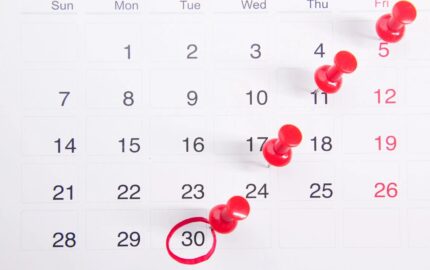My vexations with the bots are many. They read my mind when I enter the first few words — or letters — of a Google search. They track my phone to the dentist's office and then send endless ads for tooth bleach. I am convinced they cheat when I play Cribbage on my phone. As for whether the wonders of A.I. will outweigh the dangers, count me among the confused.
But skeptical as I can be, and as baffling as I find ever-changing algorithms, I have to give a nod to the bots when 1) they reveal bursts of intelligence and 2) that intelligence really can be credited to you, the real people out there who hit the clicks that the bots then count.
That's what happened when I reviewed the top pageviews from 2023 Storyboard posts. It's necessary to note that Storyboard analytics can't be analyzed the same as news sites that people follow day-by-day. People come to us in more circuitous ways, or whey they have a need. Our analytics show that most of you find your way to a post through an internet search: Maybe you're looking for some advice on story structure or interviewing or voice; or maybe you were searching a certain issue — like gun violence or immigration or religion — and SEO dished up a link to a Storyboard post. The other most-traveled routes to Storyboard are through social media shares, our Friday newsletter and, I hope, assignments in various writing classes and workshops.
However you find your way to Storyboard, thank you. And your most frequent page views this year — what I think of as the "people's choice" awards, did not disappoint.
A noteworthy trend is on the number of featured projects that blend the reporting methods of traditional investigative journalism with the creative reach of narratives. The other strong message is that Storyboard readers are hunting for concrete tips: How to source, report, interview and write. As more of you work as freelancers or in newsrooms with few editors, the hunger for tools is apparent. That validates the core of Storyboard's mission, which is to explore the art and craft of story.
Below are your 10 most-read stories of 2023. In a separate post, I'll weigh in with a few of the editor's faves.
- A revealing profile of a family that defied their faith's edict on home schooling: Peter Jamison of The Washington Post annotated his intimate profile of an evangelical Christmas couple who chose to send some of their children to public school despite the strictures of their community.
- A collaboration through nine months, 14,000 words, 36 chapters and a “leap of faith:”Annotation of a investigative project, written as a narrative, by Pulitzer Prize winners Raquel Rutledge of The Milwaukee Journal Sentinel and Ken Armstrong of Pro Publica. They tracked the fatal negligence of a Milwaukee landlord and lax oversight agencies.
- Reconstructing a murky maze of blame: Annotation of investigative narrative by Lauren Smiley, for Wired, who revisited a fatal crash involving a self-driving Uber and the blame placed on the car’s distracted “driver.”
- A true crime podcast that is more about truth than crime: An analysis of the audio documentary “Stolen,” by veteran Canadian broadcaster Connie Walker, who traced her own family’s history to the brutality of Canada’s residential schools for indigenous children. This psot was one in a reprised “Audio Danger” series by audio producer and editor Julia Barton (Nieman Fellow 2024).
- When a migrant trail goes cold, fresh reporting finds a deeper truth: For the Guardian Long Reads, British freelancer Samira Shackle reconstructed the mysterious and misreported journey of Nigerian stowaways aboard an oil tanker that anchored off the coast of England.
- A whimsical request inspired some essential writing tools: A letter from a struggling writer prompted Poynter writing guru Roy Peter Clark to summarize a lifetime of writing advice in 33 succinct lessons.
- Read not just for the what of the story, but for the how of the writing: Storyboard editor Jacqui Banaszynski mused on the value of learning to read like a writer, and shared what she has learned from some of the writers she follows.
- Notes from a nonfiction writing workshop: Romanian magazine founder/editor Cristian Lupsa (Nieman Fellow 2014) captured tips from a weeklong writing workshop in the Carpathian mountains.
- How to free your writing with free writing: Professor and science writer Korrina Duffy shared the first draft of a “free write” — a new technique for her — and described how she turned it into a polished final piece. She drew from psychology research to underscore the value of fast, first drafts.
- John Lennon, Jimmy Breslin and (deadline) narrative as the sum of its parts: In the first of a four-part series on the elements of narrative, Oregon writer Lauren Kessler deconstructed how famed New York newspaperman Jimmy Breslin found took a creative story approach to the murder of the beloved musical genius. Other pieces in Kessler’s series explored the reporting and writing of character, scenes and endings.



